
Play isn’t just fun – it’s also good for your mind. Nuro has been designed to help users enter an open, curious mindset – a state called ‘relaxed alertness’.
Code on Canvas was approached by Clemenger BBDO to create a unique experience for La Trobe University, in partnership with the NGV Triennial. La Trobe’s expert research was the catalyst for our brief to help come up with an interactive online experience for mobile and desktop to put people in a state of 'relaxed alertness', the optimal state for learning - perfect for entering the Triennial. (You can learn more about the science behind this on the LaTrobe site here.)
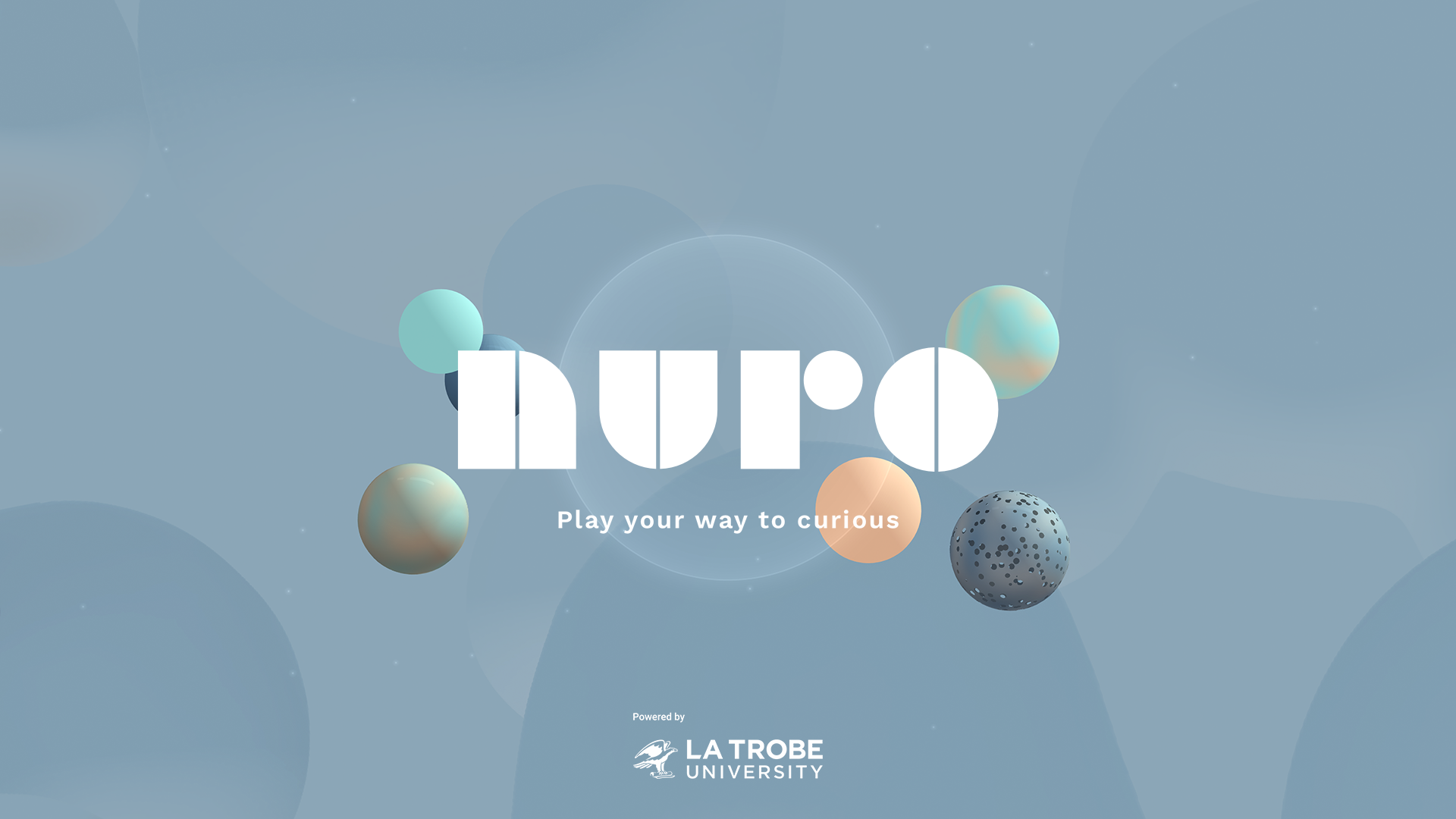
The Idea
The foundation of this innovative experience was through collaboration with La Trobe’s expert researchers and scientists and their leading work into relaxed alertness. We proposed a variety of different experience ideas and worked with the University to whittle them down to our favourite, Nuro. As playful as Nuro is, it goes beyond being simply a game. It is an abstract molecular world that visitors explore with exploration as its own reward.

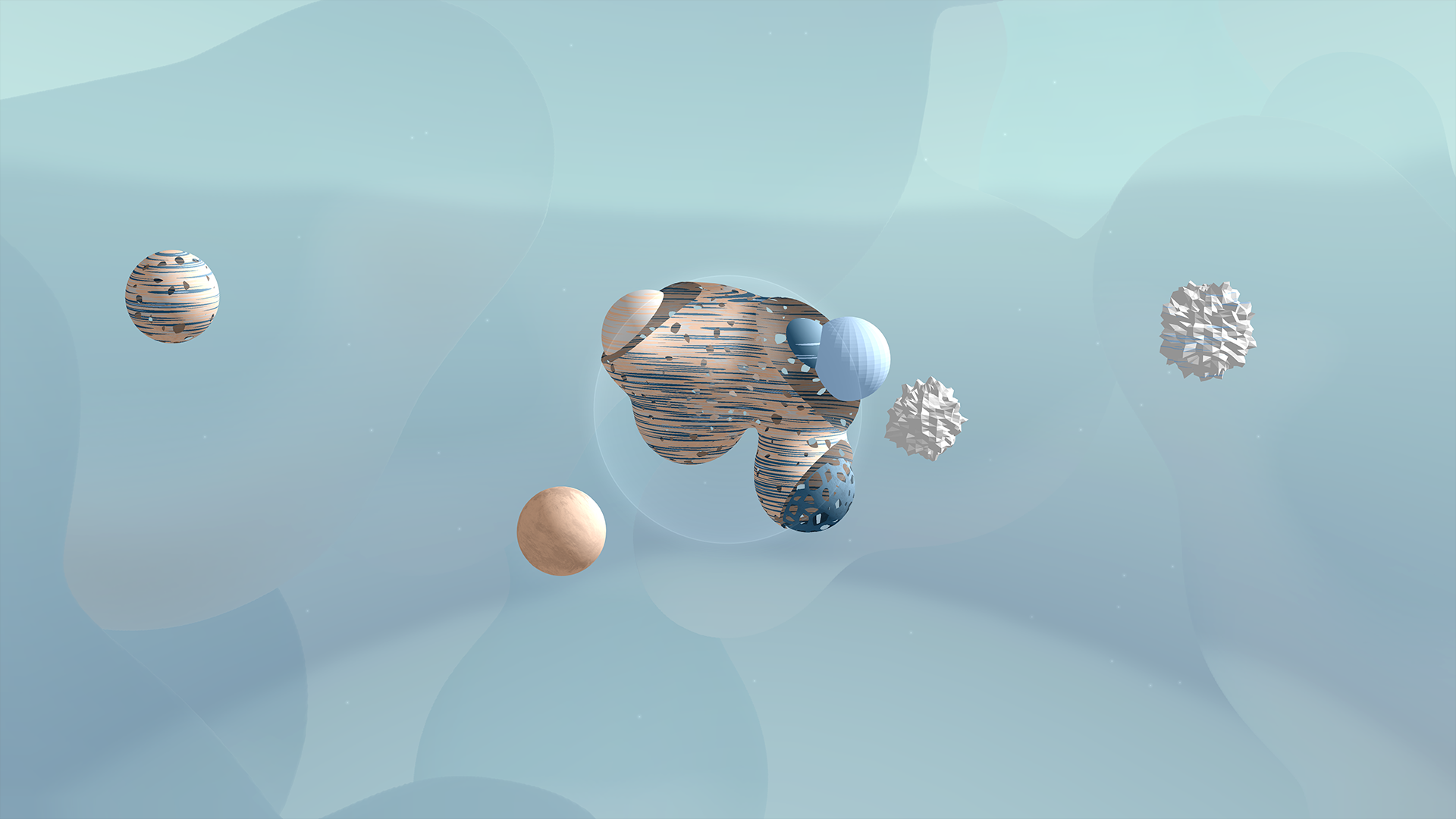
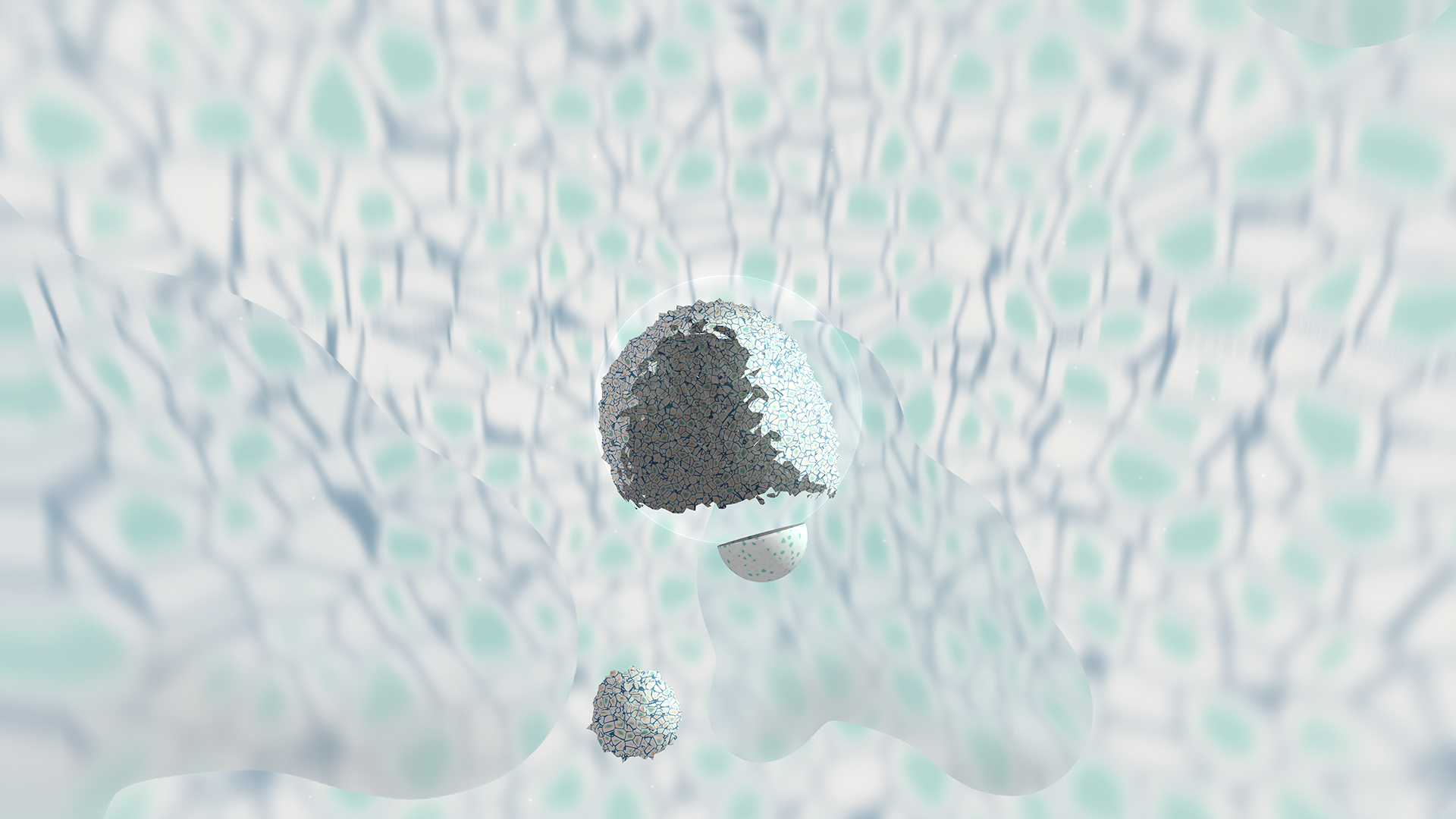
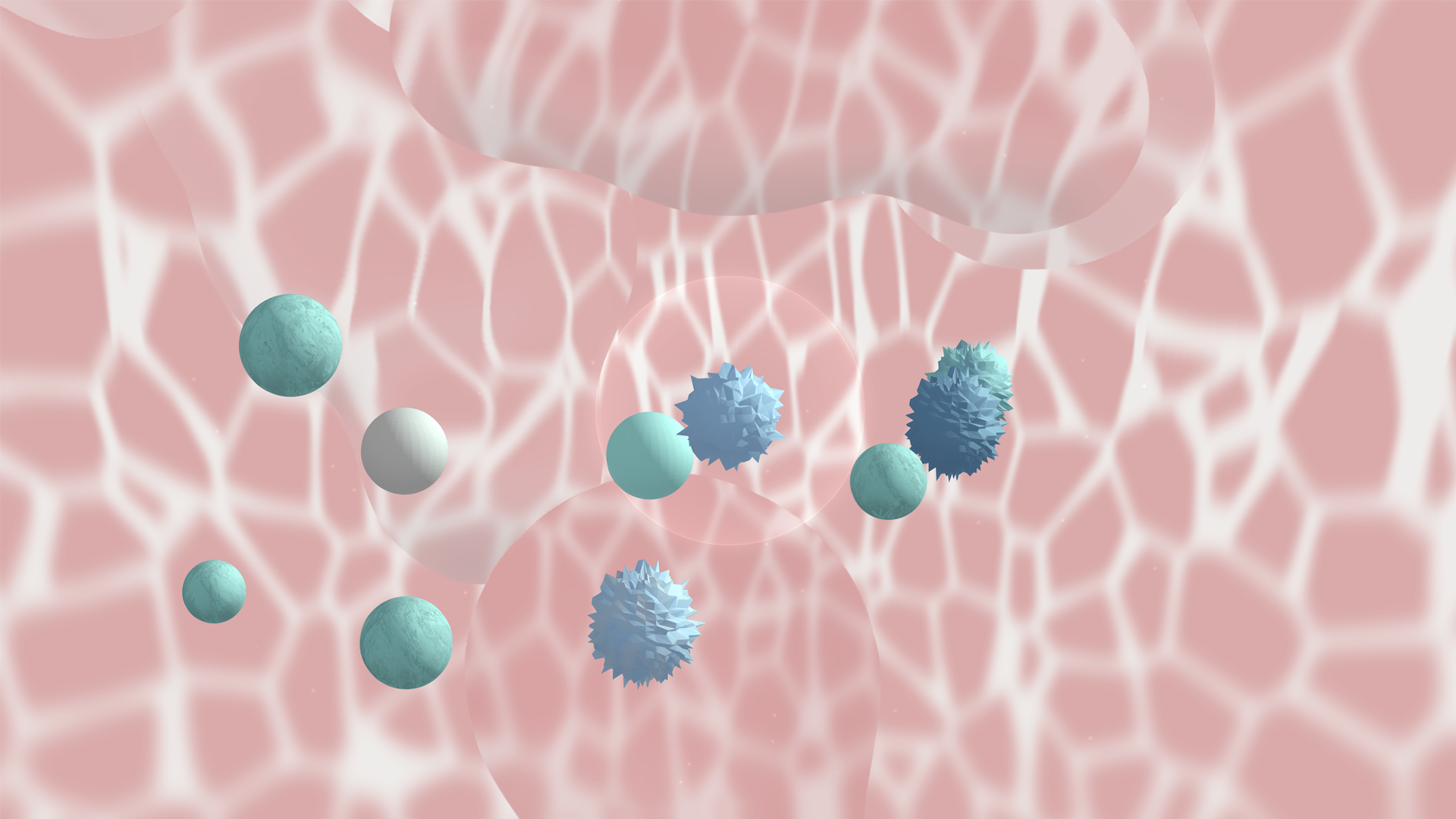
Onboarding
Backed by the research of La Trobe’s own Dr Skarbez, for a person to achieve and maintain a state of ‘relaxed alertness’ and remain immersed in an experience, one important factor is the ‘plausibility illusion’. This means that the experience needs to be believable according to the rules of the world you have created. If the experience starts to produce unexpected behaviour, this can become frustrating, which would defeat our purpose. One of the other challenges in this project was striking the right balance of exploration and progression without defaulting to the sometimes frustrating challenge and reward mechanics required by most games.
Establishing the rules of play is critical to the experience. You see this is in every successful game, as the user is slowly exposed to the rules of the world one at a time, without being overwhelmed. For Nuro, the onboarding at the start of the experience is hands on, meaning that the user is asked to complete a series of intuitive actions which explain the world before launching them into an environment of free play.
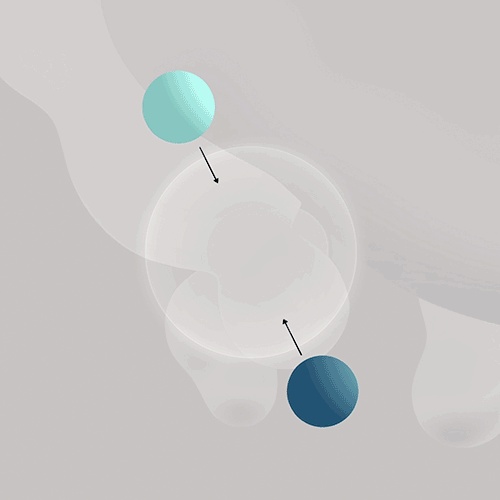
1. Drag spheres in and out of the center to combine or separate them.
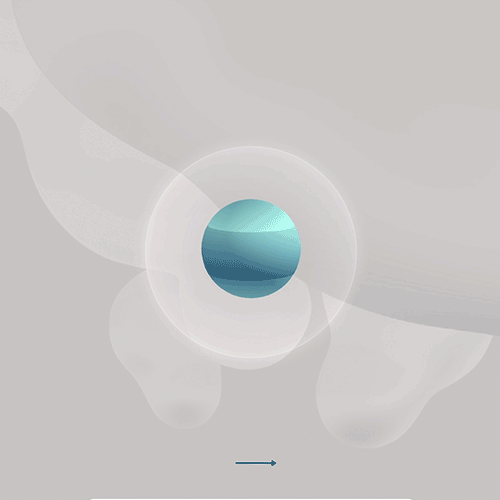
2. Drag the surrounding world to find new spheres.
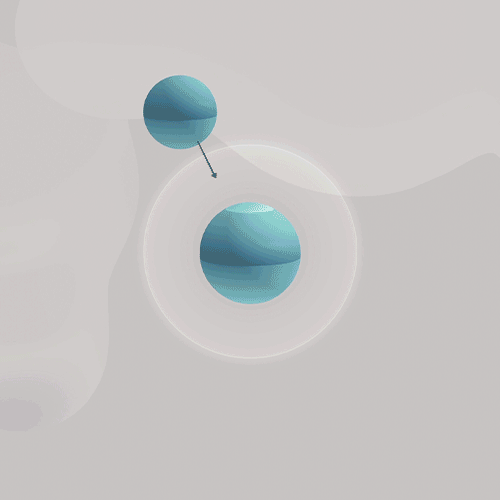
3. Match spheres of the same type to travel into the world of that sphere.
Metaballs
As simple as the interaction is there is some very sophisticated WebGL shader programming happening behind the scenes to make this possible.
“In computer graphics, metaballs are organic-looking n-dimensional isosurfaces, characterised by their ability to meld together when in close proximity to create single, contiguous objects.” - thanks Wikipedia!
The technical concept behind Nuro is to meld properties together and create new combinations that span a spectrum of form, colour, texture and behaviour. Metaballs allowed us to create these fluid interactions in combination with a rendering technique called Marching Cubes, which we pushed to its limits. Initially we also scoped another technique called Ray Marching which gets around the resolution limitation of Marching Cubes but it unfortunately ended up being too slow at high resolutions across the variety of devices we were determined to support.
Sharing
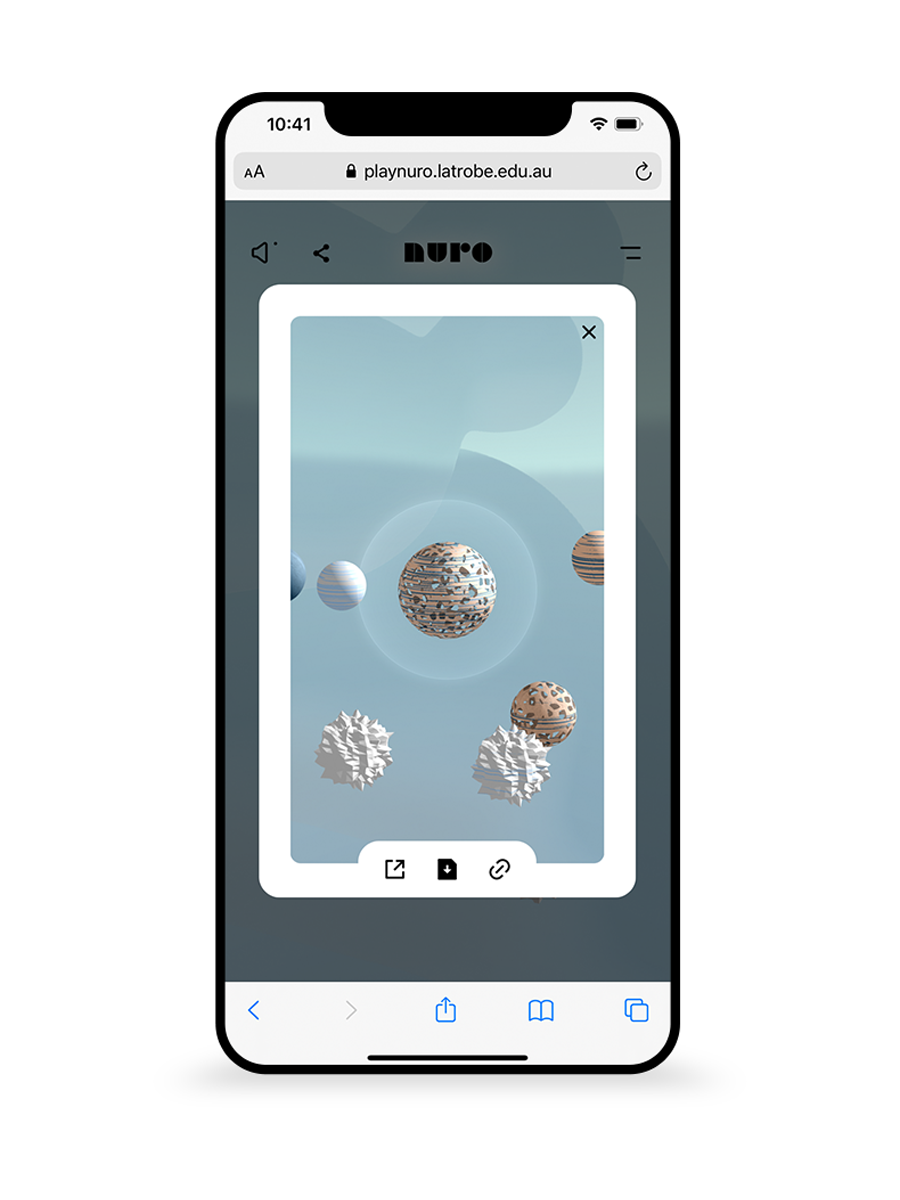
Social sharing is an important component of every web project that we work on and we always make sure that the content embeds and displays well on all the major social platforms. Nuro enables the user to take a snapshot of the rich world at any point during their journey. We then quickly build and upload a static webpage for each capture, giving the user a single link to share that looks great on their social feed.
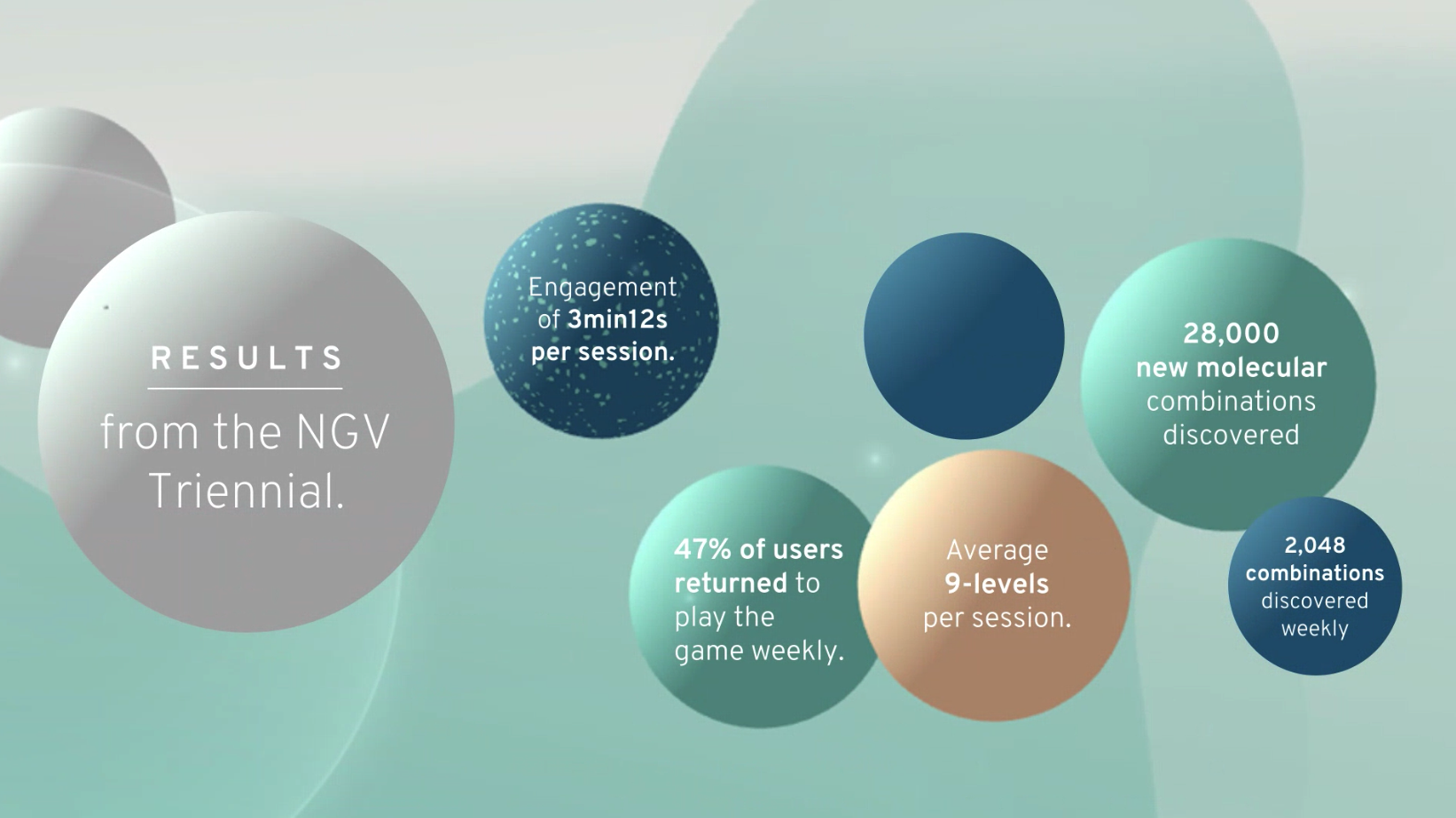
We were so pleased to see in the analytics that users enjoyed the app as much as we did. We're looking forward to seeing where we can help take this project next. Whether people are preparing their minds for new experiences like entering the NGV Triennial, competing on the sports field or sitting an exam we can all use some more relaxed alertness! Try Nuro for yourself here.